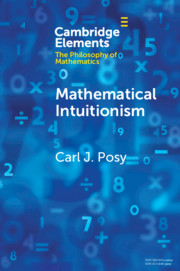Element contents
Mathematical Intuitionism
Published online by Cambridge University Press: 22 October 2020
Summary
Keywords
- Type
- Element
- Information
- Online ISBN: 9781108674485Publisher: Cambridge University PressPrint publication: 12 November 2020
Bibliography
- 23
- Cited by



